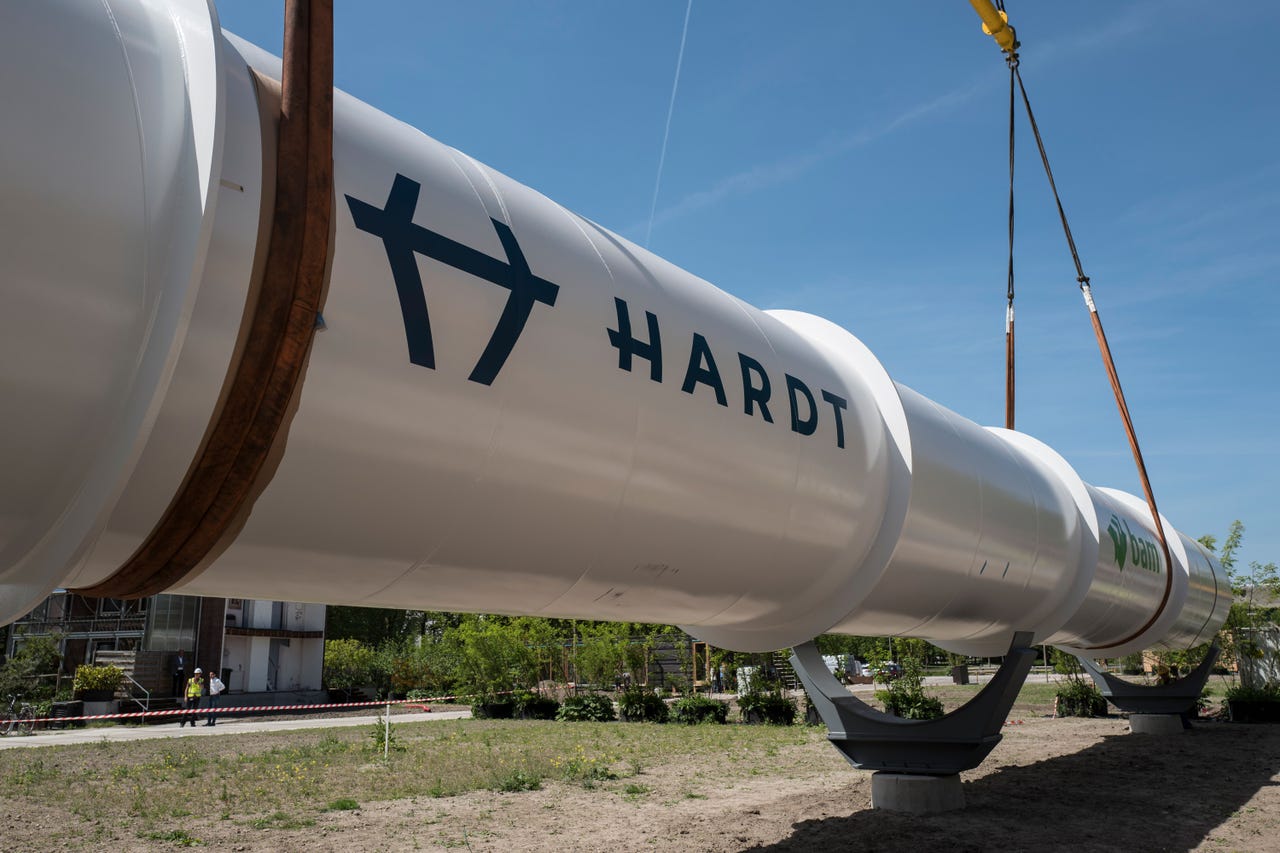Elon Musk's Hyperloop: Can this new test track bring subsonic pod travel closer?

The new Netherlands experimental facility can support tests on a full-scale Hyperloop pod at low speeds.
The prospect of one day hurtling through a metal pipe at more than 621mph/1,000kph in a levitating Hyperloop pod might seem like a pipe dream, but public and private organizations in the Netherlands are deadly serious about making it a reality.
This week, Dutch startup Hardt Global Mobility unveiled Europe's first Hyperloop test facility in Delft, nestling among a cluster of young high-tech companies and academic buildings in the western Netherlands.
The test facility is 30 meters (98ft) long and has a cross-section of three meters, which can support tests on a full-scale Hyperloop pod at low speeds.
Built with the global construction company BAM, and with investments and support from the Dutch infrastructure and environment ministry, the Delft University of Technology and national train company NS, Hardt will operate the test facility to develop its own Hyperloop transportation system.
Hardt is made up of former members of the Delft Hyperloop Team, a Delft University of Technology student group that won Elon Musk's Hyperloop Competition Weekend I in January. Four months later, and with financial backing, some members of the team formed Hardt.
While the test facility's overall structure has been completed, Hardt will continue installing hardware that will enable it to test the system's magnetic levitation and vacuum capabilities. The company aims to build a high-speed test facility in 2019, according to Hardt co-founder Tim Houter.
Dutch infrastructure and environment minister Melanie Schultz van Haegen said the Hyperloop's high speeds and environmental friendliness were the main draws that got the government interested in supporting the Hyperloop's development. The Hyperloop concept has zero emissions.
Although the Hyperloop concept has existed since at least the 1860s, SpaceX founder Elon Musk popularized it in August 2013, when he published a design manifesto entitled Hyperloop Alpha. Since then, enthusiasts and entrepreneurs have been developing their own versions of the Hyperloop.
California-based Hyperloop One exhibited its test track in Nevada in March. Hyperloop Transportation Technologies, also based in California, is currently building a prototype of its Hyperloop pod that is slated for completion in 2018.
These Hyperloop companies are now looking to Europe to support their ideas. Hyperloop Transportation Technologies has an "exploratory agreement" with Brno, in the Czech Republic, to create a Hyperloop line to Bratislava. Hyperloop One recently visited government officials in Lithuania and has also been discussing partnerships with the Dutch government.
"We know that H1 is talking to people here. We're talking most of the time to the same people," Houter told ZDNet.
Due to its increasingly dense urban populations, the Netherlands may be one of the most logical places to install the Hyperloop. The Randstad area, a region that includes the Netherlands' four largest cities, Amsterdam, The Hague, Rotterdam and Utrecht, is set to grow by about 700,000 people by 2025, according to Statistics Netherlands. Amsterdam will grow by 110,000 people alone.
Without experimenting with new transportation modes, BAM Infra director Marinus Schimmel said, the country's roads and air and train systems will eventually hit capacity. For BAM, the Hyperloop is a good investment because its construction costs and building times are similar to those of trains.
Houter sees using a Dutch Hyperloop to carry not only passengers but also industrial and maritime freight. According to the Netherlands Foreign Investment Agency, around two-thirds of all the EU's maritime freight travels through the Netherlands.
Hardt aims to realize its first commercial route, traveling from Amsterdam to Paris in under one hour, by 2021.
More on Hyperloop
- Hyperloop One settles, cloaks employee harassment lawsuit in secrecy
- This Hyperloop firm has yet to attempt a test run - but it's already working on the app
- Russia taps Hyperloop for domestic transport
- Watch Hyperloop One's first propulsion test sled hit 100mph in Nevada desert
- Elon Musk's Hyperloop hurtles closer: Public demo plus $80m injection